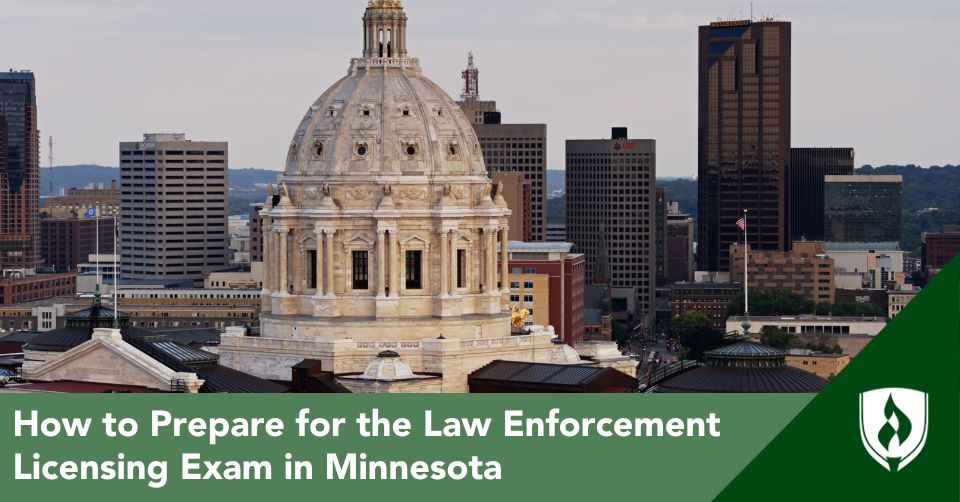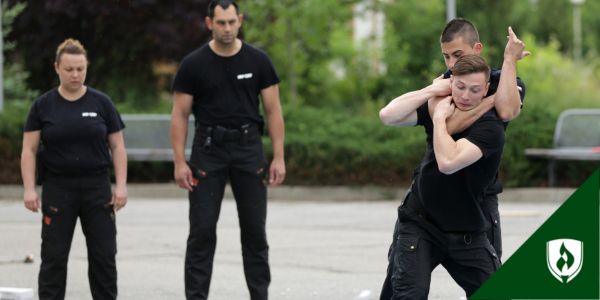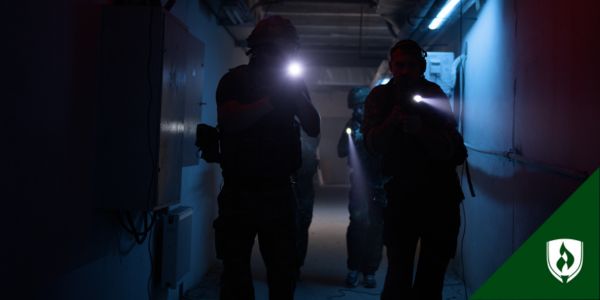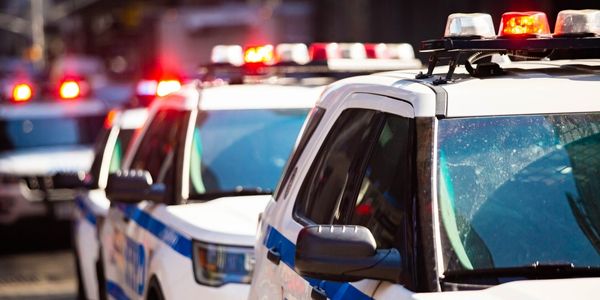
Law enforcement might seem like a straightforward field to get into when you're on the outside. But as soon as you start looking into training and programs, you realize that law enforcement agencies all seem to have their own version of requirements.
Part of this is because police officers need different career preparation than most other careers. There are physical skills you absolutely must prove your competence with, for example. But there are also so many intellectual and academic pieces of police work as well. You’ll need to understand laws, history, biases, mediation and so much more. Learn more about how the police academy works.
1. First, read up on the right requirements for your area
The other confusing aspect of law enforcement is that every state has its own specific laws and its own process for training police officers. And even within the same state, there's variance.
Most law enforcement agencies follow certain standards for hiring police officers, and those standards often include some sort of examination. But really, it changes from place to place.
If you want solid law enforcement licensing exam preparation, you need to find the specific data for your state. Start with the .gov website for your state and search for their law enforcement officer requirements.
If you are preparing for law enforcement in Minnesota, keep reading! This guide is for you.
2. Confirm your eligibility for the law enforcement licensing exam
You probably already know that you need to meet specific standards to even apply for a licensing exam.
Once again, this varies by location, but in Minnesota, you cannot take the Minnesota Peace Officer Licensing Exam until you have completed a post-secondary degree program and a Minnesota Professional Peace Officer Education (PPOE) program from a POST Board certified school.1
To be admitted to a certified PPOE program you need a high school diploma or the equivalent.. And you need to pass...1
- A physical fitness test
- A psychological evaluation
- A medical screening
- A criminal history screening
These checks don't necessarily mean you'll be ineligible if you have a crime in your record or a mental or medical diagnosis. However, some things are automatic disqualifications (ex: a domestic assault conviction). Read all these standards thoroughly.
Once you've met the requirements and completed a PPOE program, you can apply for the licensing exam.
Minnesota also has a Reciprocity Licensing Exam that allows experienced officers from other states, or from certain federal and military police backgrounds to test without completing a new program. If that might apply to you, check out the MN POST Reciprocity exam requirements.
3. Apply to take the exam
The POST exam is one of several different licensure examinations in law enforcement. It's considered a police written exam or written test, even though you'll take it on the computer. The "written" aspect here is to help differentiate it from physical fitness exams or physical ability tests.
"After our program, graduates apply with the MN POST Board online," says Bentley Jackson, Coordinator for the Law Enforcement program at Rasmussen University.
"Then coordinators approve the students, and they can go take the test."
To apply for the MN POST exam, you can get a written application from your program coordinator or apply online. You can apply for the MN POST exam here.
The test is administered by PSI. You'll be able to choose your exam date, time and location in Minnesota.
You will need to pay an exam registration fee of $70 to PSI and $105 exam fee to the MN POST Board, and then the PPOE Coordinator will receive notification that there is an application that needs to be signed-off on.³ Once everything is set, you're ready to hit the books!
4. Review the study guide and practice test questions
You will have 3.5 hours to work through approximately 150 multiple-choice questions, according to the MN Board of Peace Officers Standards and Training guide. You need to reach a passing score of 70% on the exam to gain your license. That means you need to get at least 105 questions right.
"There are over 400 learning objectives POST sets down," Jackson says. "Material will reference classes they took on the academic side of training: laws, constitutional requirements and scenario-based questions. Like, you respond to a call, and this is happening..."
As a police officer, your work will be more about situational decision-making than about knowing the correct answer to an exam question. These scenario-based questions try to test that.
For example, the MN POST preparation guide offers this sample question:2
While working an afternoon shift you are on the scene of a missing child call in a residential neighborhood in your city. While walking through a yard, you are stopped by a neighbor. He asks if you can conduct a brief premise survey to see if his house is reasonably protected against burglary. The best way to handle this situation is to:
a. Stop your search for the child because there are other officers on the call and the resident is asking for assistance.
b. Ignore the resident because the missing child call is a higher priority.c. Explain to the resident that you are involved in a call and that you will follow-up with them later in the day.
d. Call a supervisor to handle the request
Other questions will cover many different areas of your education, including:2
- Community policing techniques
- Duty to intercede and report
- Consistent use of discretion
- Implicit bias
- Culturally responsive approaches
- Stress management
- Data practices and interaction with the media
- Organized crime
- Autism Spectrum Disorder (ASD) and policing
- Traffic regulation and traffic related law enforcement
- Criminal justice system history and overview
- Constitutional rights, criminal procedure and rules of evidence
- Warrants, subpoenas, orders and summons
- Minnesota criminal code and statutes
- And so much more
If you are ready to study, check out the whole MN POST Board Peace Officer Licensing Exam Study Guide.2
There is no official practice test for the MN POST exam, but the study guide does feature lots (nearly a hundred pages) of information about exam categories, study topics and practice questions that can help you get used to the wording and format.
5. Practice wellness
Exams tend to make everyone at least a little nervous. But after you've reviewed the material and practiced a bunch of questions, the best thing you can do for your upcoming exam is to sleep and eat well.
Practice good sleep hygiene, eat lots of nutrients, stay hydrated, and engage in any self care routines that help you feel grounded.
6. Know what to expect on test day
Make sure you know how to get to your testing location and have an alarm (or two or three) set to remind you of your testing time. You won't be able to bring any electronics into the testing center, so prepare to hand over any devices you have. And know, the odds are that you've been well prepared at this point.
"Our first-time test takers have over a 90% pass rate for the Minnesota Peace Officer Licensing Exam," Jackson says. But if you do fail your first test, you are allowed two retakes before you'll need a remedial training plan.2
Take the time to really thrive in law enforcement
Everything you've learned and trained for has brought you to the exam—but it also goes far beyond that.
"The most important thing to me and to our instructors is that we are teaching students to be good, effective police officers," Jackson says. "I want them to go out, be successful and have tools and experiences that will help them when they get on their own."
This was part of how Rasmussen University designed the law enforcement program. Jackson says the evening and weekend course schedule over a longer period of time tends to give students more hours of training, more repetition in the long-run.
"Agencies and police departments want to get people into the field and out of school because there's such a need," Jackson says. "But you can’t rush people through this training—that would be doing them a disservice."
Rasmussen's program can be completed in as few as 18 months and allows students to continue working and handling their other responsibilities.4
If you haven’t completed a certified Professional Peace Officer Education (PPOE) program to seek employment in Minnesota as a peace officer, get your training started and check out Rasmussen's Law Enforcement Associate degree program.
Rasmussen University’s Law Enforcement Certificate and Law Enforcement Associate’s degree program are not aligned to the standards of any professional licensing body other than the MN POST and is not intended to satisfy professional licensure requirements of any professional licensing agency in any other state. Graduates of Rasmussen University’s Law Enforcement Associate’s degree program and Law Enforcement Certificate may need to complete additional requirements before becoming eligible to sit for the MN Peace Officer Licensing Exam. As requirements may vary among federal, state, and local law enforcement agencies, it is important to consult the specific requirements of any agency at which employment may be sought.
1Minimum Selection Standards: STANDARDS FOR PEACE OFFICER ELIGIBILITY, Minnesota Board of Peace Officer Standards & Training, [accessed 6/12/2024] https://mn.gov/post/applicants/minimumselectionstandards/
2Exam Information and Study Guide for the MN POST Board Peace Officer Licensing Exam, 2023, [accessed 6/12/2024] https://mn.gov/post/assets/LICENSING%20EXAM%20GUIDE%2002-2025_tcm1189-587393.pdf
3Minnesota Board of Peace Officer Standards and Training, Applying to take a Minnesota Peace Officer Licensing Exam, (accessed June 2024), https://mn.gov/post/applicants/os/onlineservices.jsp
4Completion time is dependent on the number of transfer credits accepted and the number of courses completed each term.




